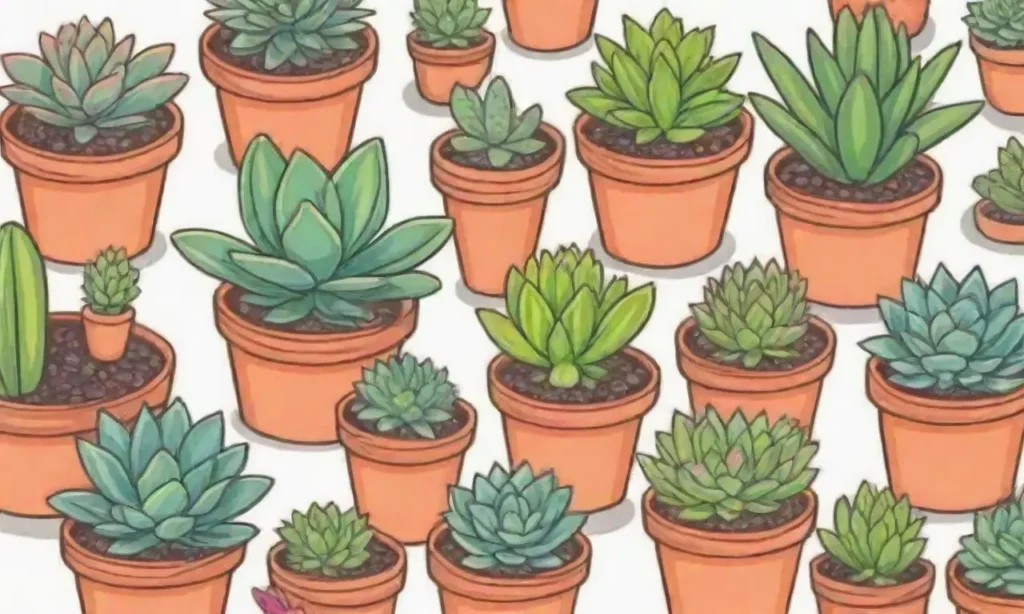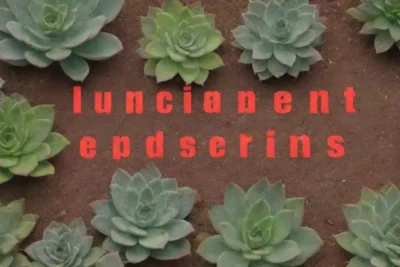
How to Support Organizations Working for Succulent Conservation

Introduction
Succulents, characterized by their thickened, fleshy parts, are remarkable plants that have captivated the hearts of enthusiasts and gardeners alike. These unique plants are not only admired for their beauty and variety, but they also play a crucial role in their ecosystems. However, succulent conservation has become increasingly important due to habitat destruction, climate change, and the rarity of many succulent species. Standing up for these extraordinary plants means supporting the organizations working tirelessly to protect them.
This article aims to provide a comprehensive guide on various ways to support organizations working for succulent conservation. From financial contributions to grassroots activism, we will explore different avenues through which individuals can play a significant role in preserving these fascinating plants. Each method detailed here will empower you to raise awareness and galvanize support for organizations dedicated to this vital cause.
Understanding the Importance of Succulent Conservation
Succulents are not merely ornamental plants; they play a vital role in their habitats and, consequently, in the global ecosystem. As water-storing plants, succulents are adapted to survive in arid environments, thus helping to prevent soil erosion and maintain the stability of fragile ecosystems. Many succulents serve as food sources for native wildlife and contribute to maintaining biodiversity. Therefore, their conservation is essential not only for aesthetic reasons but also for ecological integrity.
Moreover, certain succulent species are native to specific regions and can have deep cultural significance. Communities that rely on these plants may have unique practices and traditions tied to their growth and use. In some areas, succulents are harvested for food or traditional medicine, showcasing their value beyond their visual appeal. The decline of these species could lead to a loss of traditional knowledge and cultural heritage. Supporting organizations that focus on sustainable practices and habitat conservation is essential to maintaining these cultural connections.
In light of these factors, conservation efforts are more critical than ever. Various organizations, both local and international, are working to secure the future of succulents by protecting their natural habitats, conducting research, and engaging in education and outreach. But these organizations often struggle with funding and resources, underscoring the need for public support.
Ways to Support Succulent Conservation Organizations
Financial Contributions
One of the most direct and impactful ways to support organizations focused on succulent conservation is through financial donations. Many nonprofit organizations rely heavily on contributions from individuals to fund their projects and initiatives. Donations can vary from one-time gifts to recurring monthly contributions, allowing you to choose a method that fits your financial situation.
By donating to such organizations, you enable them to carry out essential tasks such as habitat restoration, creating educational programs, and conducting research to understand the various threats facing succulents. Your contributions may assist in organizing workshops that educate the public about the importance of conservation, or help provide resources to native populations involved in sustainable succulent management.
 The Connection Between Succulents and Ecosystem Health
The Connection Between Succulents and Ecosystem HealthMany organizations also offer membership programs, where your contribution can entitle you to exclusive benefits like newsletters, event invitations, and other educational resources. Being part of these programs not only supports the organization's mission but also keeps you informed about the latest developments in the field of succulent conservation.
Volunteering Your Time and Skills
Aside from financial support, another effective way to enable succulent conservation organizations is through your volunteer time and skills. Regardless of your experience level, there are many ways for you to contribute. Many organizations welcome volunteers to assist with various tasks, including plant propagation, habitat restoration, and event planning.
Volunteering can also take the form of outreach and education efforts. If you possess a background in science, botany, or conservation, you could conduct workshops or educational sessions in schools and communities to foster awareness about succulents. Your expertise can help demystify these incredible plants and promote better care practices and ethical gardening methods.
Additionally, organizations often seek assistance with administrative tasks, social media management, or graphic design work. If you have skills in these areas, you can apply them in ways that bolster the organization's operational efficiency, helping them reach a broader audience. Volunteering not only provides immediate support to the organization but also helps enhance your experience, skills, and connections in the conservation community.
Raising Awareness Through Advocacy
Raising awareness about succulent conservation is crucial for garnering support from the wider public. Many people may not realize the importance of succulents or may misunderstand their role in the environment. By promoting advocacy efforts, you can engage your community and drive meaningful change.
One effective way to advocate for succulent conservation is to use social media platforms. By sharing informative articles, videos, images, or personal experiences related to succulents, you can reach a broad audience. Creating hashtags or campaigns that draw attention to the plight of endangered succulent species can further amplify your message. Encourage your friends and family to join in and share their own stories and experiences to broaden the conversation.
You can also organize local events such as community clean-ups or succulent workshops. These events can serve as platforms to educate participants about succulent care, the importance of conservation, and responsible cultivation practices. They also provide tangible actions that communities can take together. Even simple acts like starting a petition or sending emails to your local representatives can help amplify the urgency of succulent conservation to policymakers.
 Learning from the Past: Conservation Lessons from Succulents
Learning from the Past: Conservation Lessons from SucculentsCollaborating with Local Nurseries and Plant Groups

Many local nurseries and gardening groups are now becoming increasingly aware of the importance of conservation. By establishing partnerships with these entities, you can further bolster the mission of succulent conservation organizations. Encourage local nurseries to promote native succulent varieties and educate customers on ethical gardening practices.
A growing trend among nurseries is to provide plants that are sustainably sourced, meaning they are grown without causing undue harm to their native habitats. By purchasing plants from these nurseries, you can support businesses that align with ethical practices. You may also inspire other businesses in your community to adopt sustainable practices, thereby amplifying the conservation message.
Additionally, local plant clubs and gardening groups can be instrumental in hosting succulent swaps or educational workshops. These gatherings can attract enthusiasts who may share your passion for conservation, giving you an opportunity to connect with like-minded individuals. Join or initiate discussions during these events on how group members can support succulent conservation efforts, and consider donating a portion of your plant sales to conservation organizations.
Utilizing Educational Resources for Informative Outreach
Education is a powerful tool in promoting succulent conservation. Many organizations offer a wealth of educational resources, including pamphlets, research papers, and online courses. Take advantage of these tools to expand your knowledge about succulent species and the challenges they face, and then share this knowledge with others.
Organizing discussions or presentations at schools or community organizations can help raise awareness about succulent conservation. By sharing your newfound understanding of succulents, you can inspire others to take action. Creating informative blog posts or videos can reach wider audiences and spark discussions on social media.
Consider also integrating succulent conservation topics into existing curricula, if you’re a teacher or involved in an educational institution. Developing lesson plans centered on the importance of plant conservation fosters understanding from a young age, ensuring future generations are aware of necessary conservation efforts.
 The Fight Against Invasive Species Threatening Succulents
The Fight Against Invasive Species Threatening SucculentsConclusion
Supporting organizations working for succulent conservation is an endeavor that benefits not only the plants but also the ecosystems and communities tied to them. From financial donations to volunteering your time, raising awareness, and collaborating with local groups, there are countless ways for you to make an impact. Each individual effort accumulates over time, growing into a collective force that can drive lasting change.
As you consider your role in this important mission, remember that every action counts. Whether you are new to the world of succulents or a seasoned enthusiast, your contributions matter. By taking meaningful action today, you help protect the beauty and diversity of these plants for tomorrow.
In conclusion, by understanding the significance of succulents and becoming an active supporter of conservation organizations, you not only make strides toward preserving unique plant species but also contribute to wider environmental stewardship. Let your passion for succulents inspire your actions, and together, we can create a better future for these remarkable plants and the ecosystems they represent.
If you want to read more articles similar to How to Support Organizations Working for Succulent Conservation, you can visit the Endangered succulent species category.





You Must Read